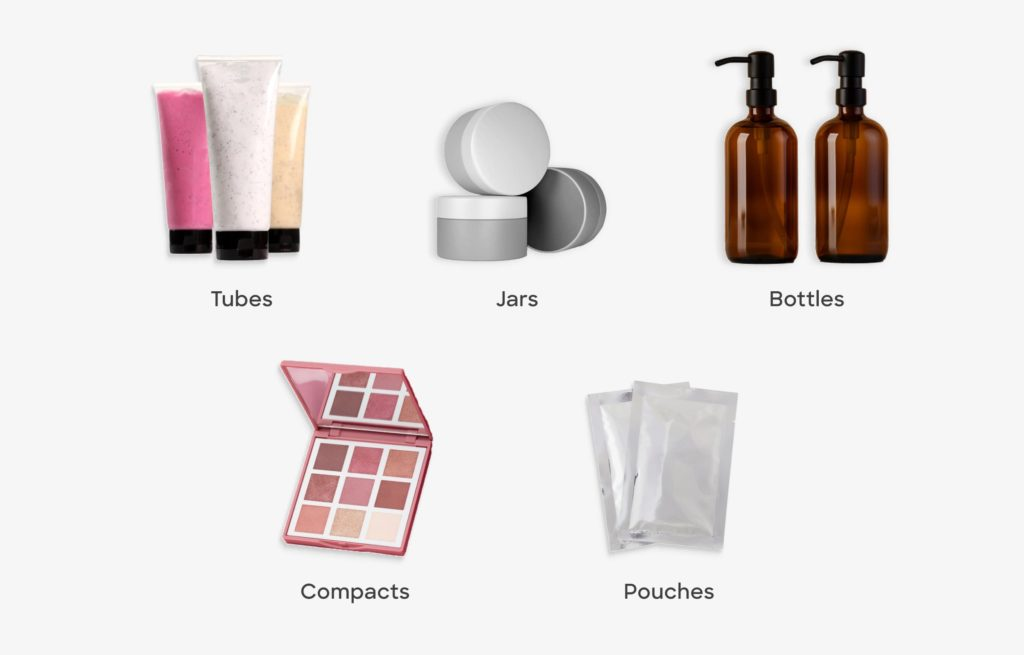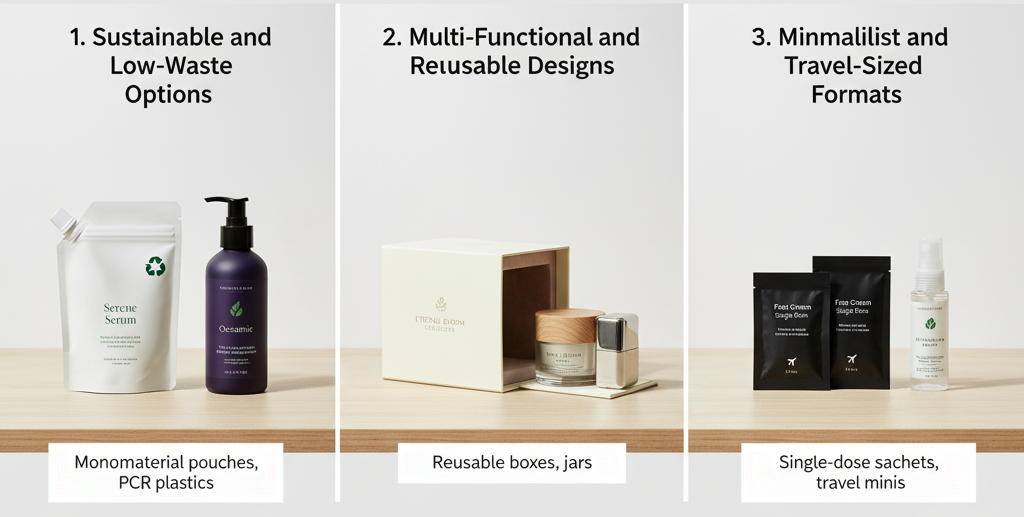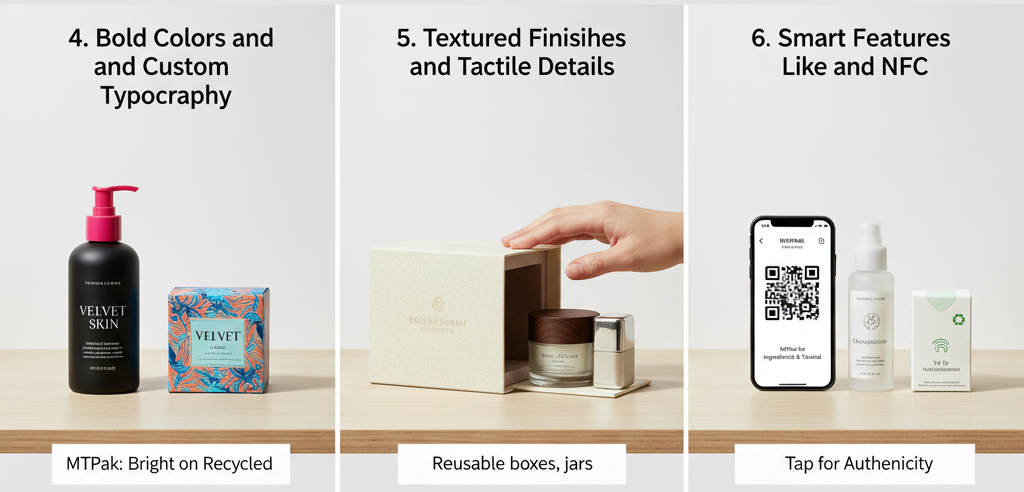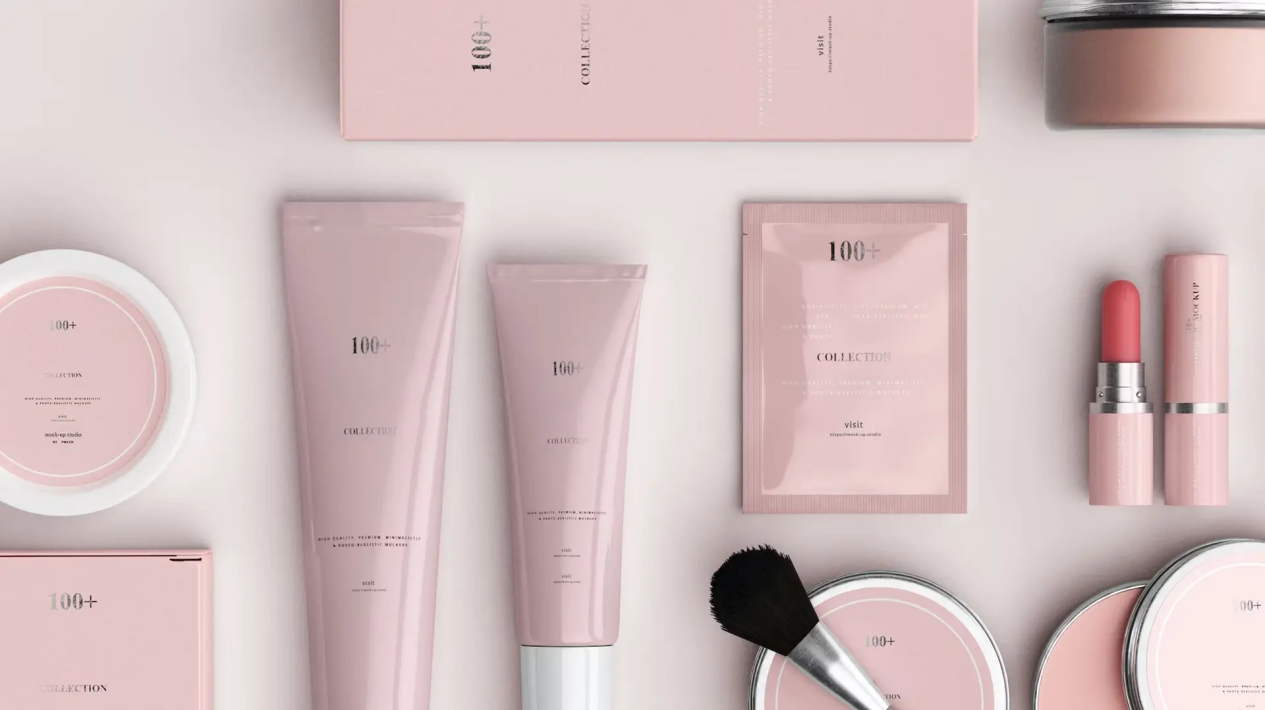Six Skincare Packaging Ideas & Design Strategies
The global skincare industry is a billion-dollar battlefield as competition now extends far beyond what's inside the bottle. With rising consumer expectations, a great product alone is no longer enough to stand out. In this aesthetics-driven market, packaging design is critical — it's the first point of contact, a physical handshake that communicates your brand's value and story. At MTPak, we provide custom and stock flexible packaging solutions for global brands. We see packaging as a functional tool for business growth, helping skincare brands navigate market challenges with practical, sustainable options.
Here’s a breakdown of six packaging ideas that actually help your brand get noticed and stay reliable.
Why Does Packaging Matter More Than Just a Container?
Most people see packaging as a wrapper. It’s not; it’s the first layer of your product’s story. If it feels cheap or hard to use, that’s what people remember. Good packaging makes opening and using the product easy, and it also protects what’s inside. Think about a serum with vitamin C—if the bottle lets in air, the product turns brown and stops working. The right packaging keeps it stable!
It also needs to survive shipping. A flimsy carton can crush or pop open in transit. A well-built box or tube arrives intact, with the product ready to use. This isn’t just about looks—it’s about delivering your product the way you designed it.
Skincare Packaging Ideas and Design Strategies
Six Practical Packaging Ideas for Skincare
Effective packaging balances visual appeal with practical function. The following six concepts offer a roadmap for achieving both. Let’s look at some specific packaging types that solve real problems for skincare brands.
1. Sustainable and Low-Waste Options
Many customers now look for recyclable or refillable packs. It’s a simple way to show you’re thinking long-term. Use monomaterial pouches for serums—they’re easier to recycle than mixed-material tubes. Or try PCR (post-consumer recycled) plastic for bottles. At MTPak, we work with brands to match the right eco-material to their product, so it doesn’t compromise performance.
2. Multi-Functional and Reusable Designs
If your packaging does more than hold product, people keep it around. A moisturizer jar that becomes a travel case or a gift box that turns into a bathroom organizer are perfect examples. You can use a rigid paperboard box with a magnetic lid—customers reuse it for storing small items. It’s a small touch, but it extends the life of your packaging.
3. Minimalist and Travel-Sized Formats
Less clutter, more function. A clean label with clear typography looks professional and is easy to read. For travel, small sizes matter. Think of single-dose sachets for face cream or 30ml bottles that meet airline limits. At MTPak, we produce a lot of flat-bottom pouches for sample sizes—they stack well and don’t roll around in a bag.
Minimalist and Travel-Sized Formats
4. Bold Colors and Custom Typography
Your packaging should be recognizable at a glance, and a custom color or unique font helps. Try a matte black bottle with a neon pink cap—it's impossible to miss on a shelf. At MTPak, we also print using high-opacity inks so colors stay bright, even on recycled stock. Just make sure it still looks clean, not chaotic.
5. Textured Finishes and Tactile Details
The texture of your packaging shapes customer perception. A soft-touch coating on a carton or an embossed logo on a label makes the product feel more premium. These don’t add much cost, but they make the product feel more premium. You can try using textured paper for gift sets at MTPak—it looks good and doesn’t slip out of your hand.
6. Smart Features Like QR and NFC
Add a QR code to your label that links to a tutorial video, or use an NFC chip for authenticity checks. This is especially useful for clinical brands that want to share ingredient data without cluttering the label. At MTPak, we can help integrate these into everything from sleeve labels to folding cartons.
Smart Features Like QR and NFC
How to Tailor Packaging for Different Skin Needs
Good packaging talks directly to what the user cares about most. The perfect design can make you feel better, convince you, or just make things easier. Here are some ideas for how you package things for three common types of customers.
For Sensitive Skin
The packaging should feel soft. Use soft colors, basic shapes, and stay away from sharp edges. Labels should state "fragrance-free" or "hypoallergenic". To keep formulations safe from light and air, we generally suggest using opaque bottles or airless dispensers.
For Anti-Aging Serums
These often have active substances like vitamin C or retinol. The packaging needs to be light-proof and air-tight. It is best to use amber glass dropper bottles or airless pumps. The package should feel sturdy, with no loose caps or weak pumps.
For Natural and Men’s Lines
Natural brands lean into kraft paper, recycled PET, and soy-based inks. Men’s products often use darker colors, simple fonts, and no-fuss dispensers. We stock a range of materials that fit these looks without sacrificing durability.
How Do You Balance Creative Design with Compliance?
Your packaging must be safe for the product and the user. That means using FDA-compliant inks and adhesives. If you’re selling in Europe, you’ll need to meet EU packaging regulations too. We test our materials for migration and stability—especially important for products with oils or acids.
It’s not the most exciting part of packaging, but it’s essential. A good supplier will handle this for you, so you don’t have to worry about recalls or rejected shipments.
How Do You Balance Creative Design with Compliance?
Conclusion
Your packaging needs to do two things: protect the product and represent your brand. The right materials and design make both happen. Sustainable options like recycled paper or compostable films now work as well as conventional ones. They keep your product safe and show customers you're serious about environmental impact.
At MTPak, we build flexible packaging for skincare brands. Our materials include recycled papers, compostable films, and PCR plastics. We use EVOH barriers for oxygen protection and water-based coatings for surface finish. Contact our team to discuss your packaging specifications. Contact us at https://mtpak.com/contact-mtpak
Frequently Asked Questions (FAQ)
1. What exactly is sustainable packaging?
It is packaging made from recycled paper, plant-based plastics, or compostable films. These materials reduce waste and carbon emissions compared to conventional options.
2. Does eco-friendly packaging actually influence sales?
Yes. Many customers now look for recyclable or compostable labels. Using sustainable packaging can directly affect their purchase decision at the shelf.
3. What materials fit a natural ingredient brand?
We use FSC-certified paper, PLA bioplastics, and PCR materials. These pair with soy-based inks for a fully eco-friendly presentation that matches your brand.
4. How do I protect air-sensitive serums?
Choose high-barrier options. Airless bottles or pouches with EVOH layers block oxygen effectively. This keeps active ingredients stable throughout product use.
5. How to balance durability with aesthetics?
We build strong seals into the packaging structure itself. Then we add a well-fitted carton for transit. This protects the primary package without hiding its design.




